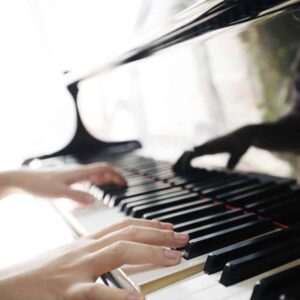 If your goal is not to use music to learn to play music, you may need to examine what you are attempting to do. While there is nothing wrong with playing by ear; reading music accompanied by in-home piano lessons in Atlanta is the best way to learn. But if you already read music, are in a healthy pattern of learning new music, and want to start using more of your ear, lets examine it.
If your goal is not to use music to learn to play music, you may need to examine what you are attempting to do. While there is nothing wrong with playing by ear; reading music accompanied by in-home piano lessons in Atlanta is the best way to learn. But if you already read music, are in a healthy pattern of learning new music, and want to start using more of your ear, lets examine it.
Variations on Playing By Ear
I have written a few blogs lately about playing by ear and I encourage you to check them out. They examine what playing by ear really is and means. Reading is not as hard as people think specially with a proper private piano teacher and knowing how to read music is the easiest way to learn to play by ear. In this blog lets take a look at Variations on learning by ear as they related to a recent student taking online music lessons.
These variations all include some sort of reading but may offer enough non traditional attention to attract students wanting to explore using, learning, and playing by ear.
Chord Charts
Chord charts are symbols usually found on top of written out melody lines. Wile playing the melody the musician can generate their own accompaniment by using the chord charts. The musician has to use their ear generate an interesting accompaniment. In most cases they use their experience from playing previous pieces of similar style or and more related to the ear a copy of an accompaniment from a famous recording.
Letting a famous recoding be your guide is how many great musicians learned to play by ear. They used their ear to first listen and love what they were listening to, and then listing to and matching what they are playing to that sound in their head from the recording.
Tab For Guitar
Guitarist and other stringed instruments have a strong variation on using your ear to learn that non-string instruments and piano students don’t. Tab or Tablature is a form of musical notation indicating instrument fingering rather than musical pitches and although because the pitch is notated with fingering most Tab relies on your ear to articulate the correct rhythm.
Rhythm And Playing By Ear
Rhythmic ear training is far to often over looked. I always played a fun ear training game with my students to demonstrate how important rhythm is. I called it “name that tune.”
In the game I would play a simple melody like Twinkle Twinkle Litte Star. I would play all the correct notes with an incorrect rhythm and then ask the student to name the song. None could. Next I would play none of the notes correctly but play the song with the correct rhythm. No matter how crazy the pitch I selected the students would guess the correct melody at a very high percentage often saying, “it’s all wrong but it’s Twinkle Twinkle.
Suzuki Method
The Suzuki Method in its essence is can be summed up in the following statement: We learn to speak before we learn to read so why not learn to play a musical instrument that way. This method isn’t focused on training the ear but in learning with the Suzuki method a student’s ear is naturally used and trained exponentially as opposed to traditional training.
Don’t Ditch Your Music
My message in all the ear-based posts is not to ditch your music but enhance your learning style. Utilize chord charts and Tab. Even if your learning a song by strictly reading music understand that your ear should always have a role as you need to be listening to what you are playing.
Are you ready to get start? Contact us today!

